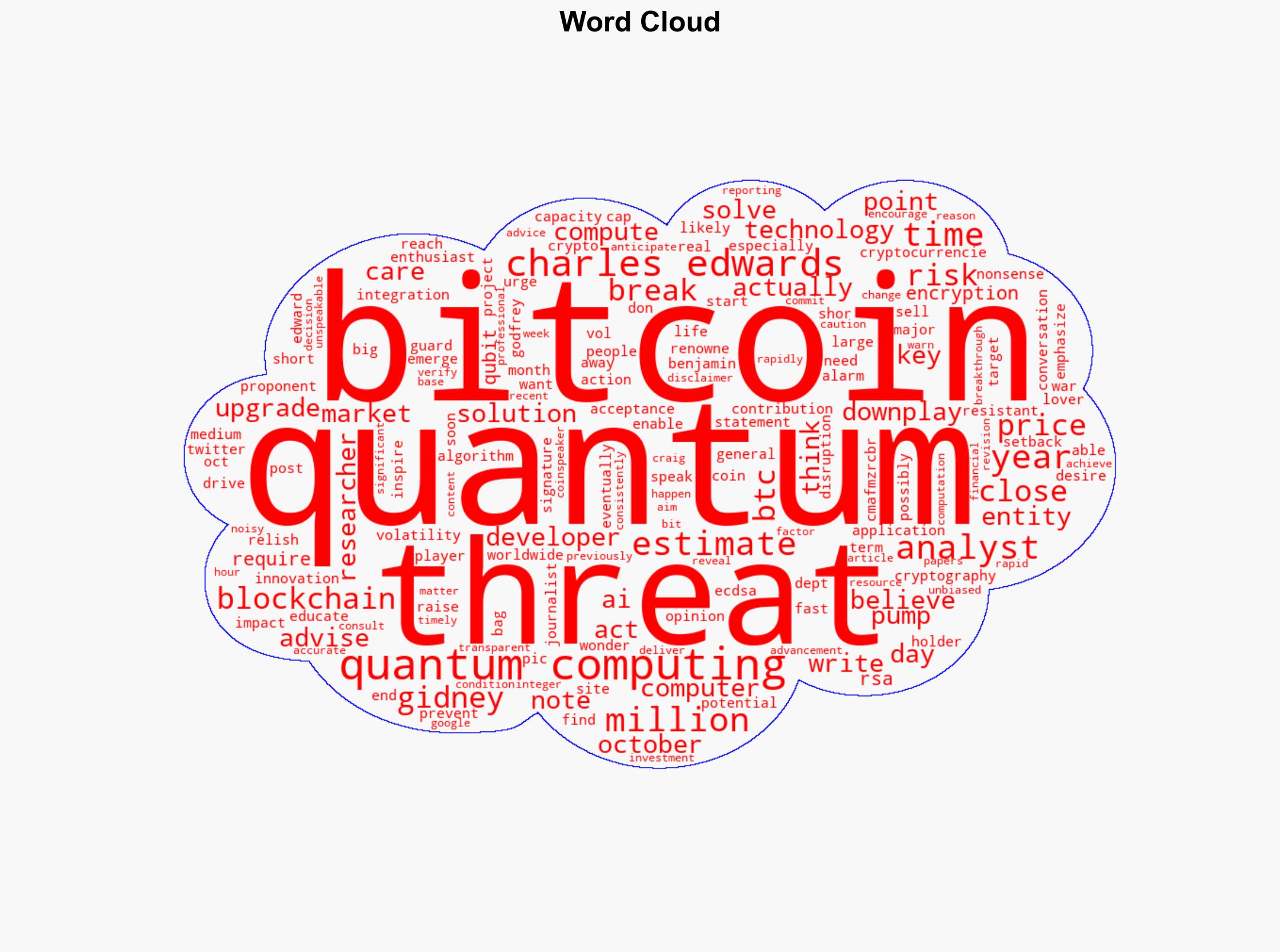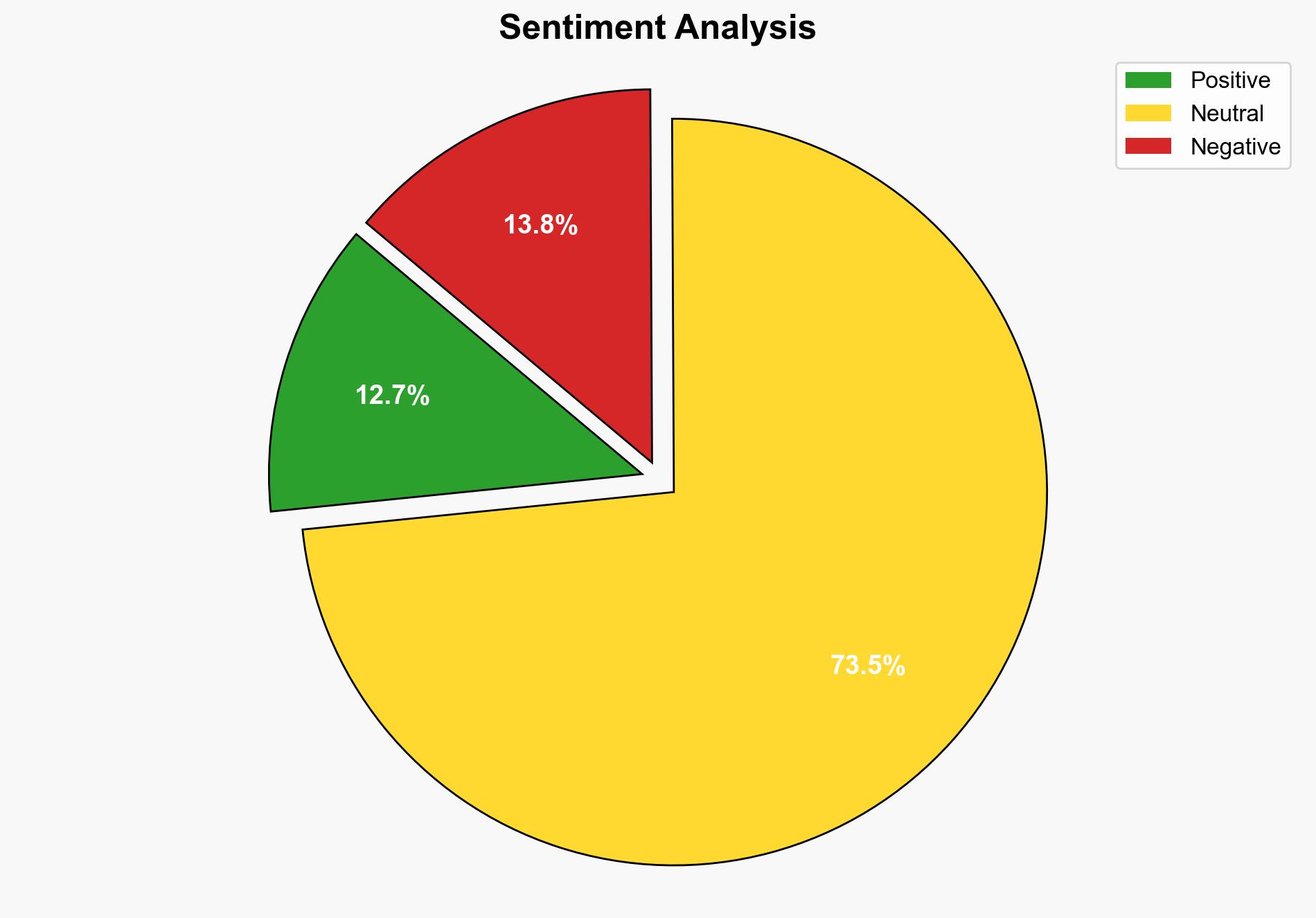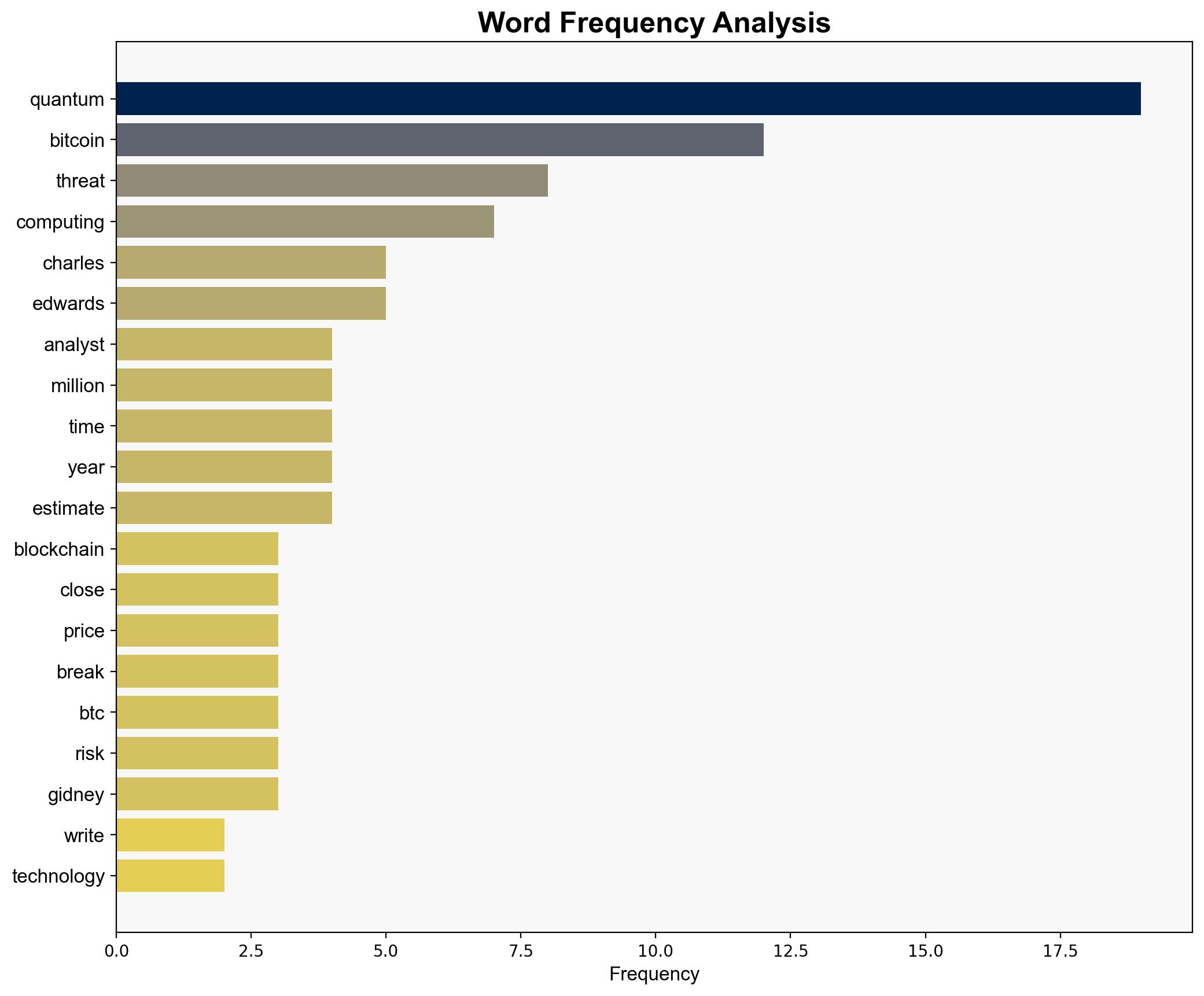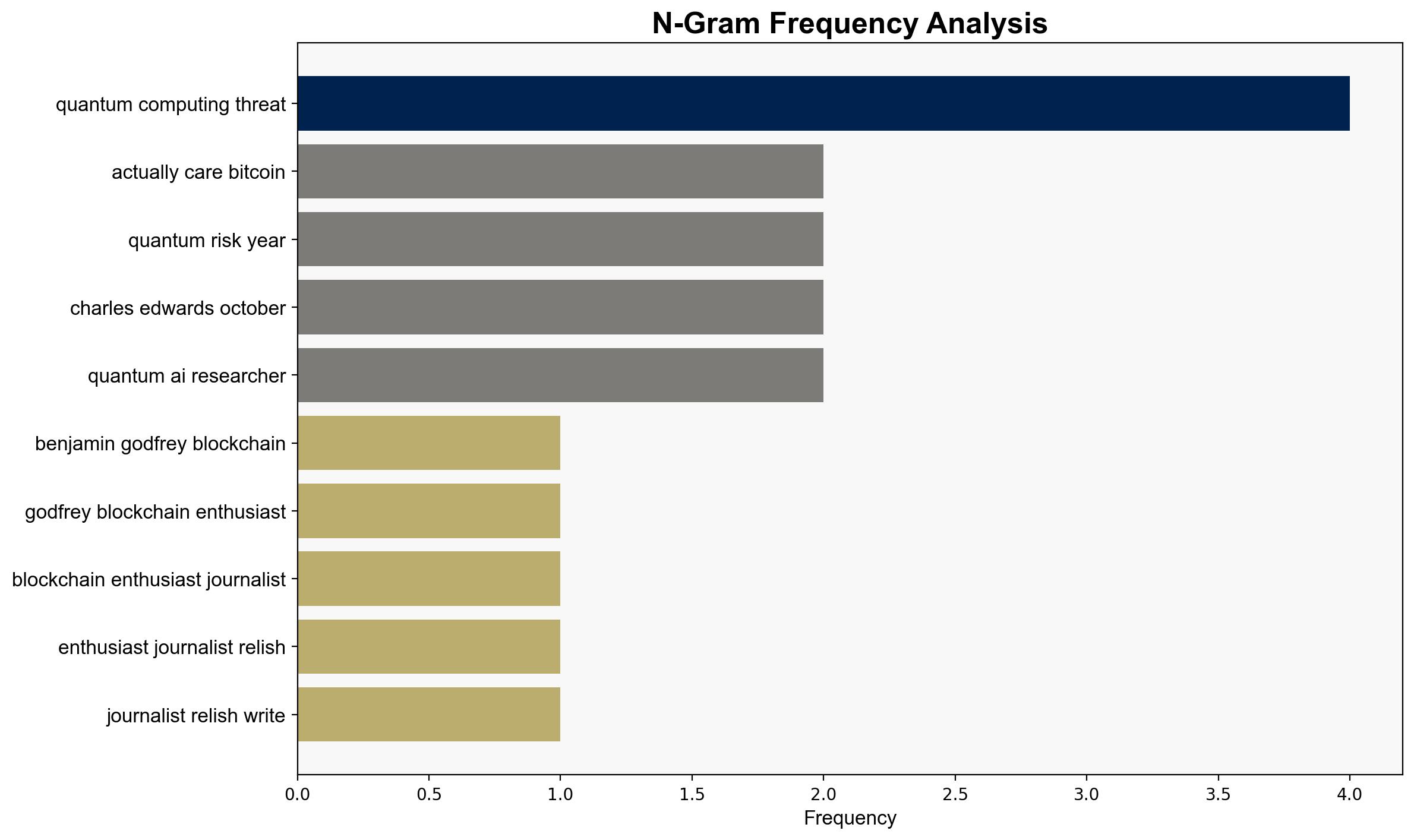Bitcoin and Quantum Threat Analyst Reveals Timeline to Act – Coinspeaker
Published on: 2025-10-09
Intelligence Report: Bitcoin and Quantum Threat Analyst Reveals Timeline to Act – Coinspeaker
1. BLUF (Bottom Line Up Front)
The most supported hypothesis is that the threat posed by quantum computing to Bitcoin’s cryptography is significant and imminent, necessitating immediate action to develop quantum-resistant solutions. Confidence level: Moderate. Recommended action: Accelerate research and development of quantum-resistant cryptographic methods to safeguard Bitcoin and other cryptocurrencies.
2. Competing Hypotheses
Hypothesis 1: Quantum computing poses an imminent threat to Bitcoin’s cryptographic security, requiring urgent action to develop quantum-resistant solutions. This hypothesis is supported by Charles Edwards and Craig Gidney, who emphasize the rapid advancements in quantum computing and its potential to break current encryption methods.
Hypothesis 2: The threat of quantum computing to Bitcoin is overstated and primarily used as a tactic to influence Bitcoin market dynamics. This hypothesis suggests that the timeline for quantum computing to realistically break Bitcoin’s encryption is much longer than claimed, and current warnings are exaggerated for financial gain.
3. Key Assumptions and Red Flags
Assumptions:
– Hypothesis 1 assumes rapid advancements in quantum computing technology and its capability to break current encryption methods soon.
– Hypothesis 2 assumes that the development of quantum computing is slower than predicted and that current encryption methods remain secure for the foreseeable future.
Red Flags:
– Potential bias from individuals with vested interests in Bitcoin’s market performance.
– Lack of consensus among experts on the timeline for quantum computing breakthroughs.
– Inconsistent estimates regarding the number of qubits required to break encryption.
4. Implications and Strategic Risks
If quantum computing advances as rapidly as some predict, the implications for Bitcoin and other cryptocurrencies are profound, potentially leading to significant financial losses and destabilization of digital currency markets. This could also have broader economic impacts, affecting investor confidence and leading to regulatory challenges. Conversely, if the threat is overstated, there may be unnecessary panic and market volatility.
5. Recommendations and Outlook
- Accelerate research into quantum-resistant cryptographic solutions to preemptively address potential vulnerabilities.
- Engage with the broader cryptographic and blockchain communities to foster collaboration and share advancements in quantum-resistant technologies.
- Scenario-based projections:
- Best Case: Successful development and implementation of quantum-resistant solutions before any significant threat materializes.
- Worst Case: Quantum computing breakthroughs occur sooner than anticipated, leading to widespread compromise of Bitcoin and other cryptocurrencies.
- Most Likely: Continued debate and gradual progress towards quantum-resistant solutions, with no immediate threat materializing.
6. Key Individuals and Entities
– Charles Edwards
– Craig Gidney
7. Thematic Tags
national security threats, cybersecurity, cryptocurrency, quantum computing




